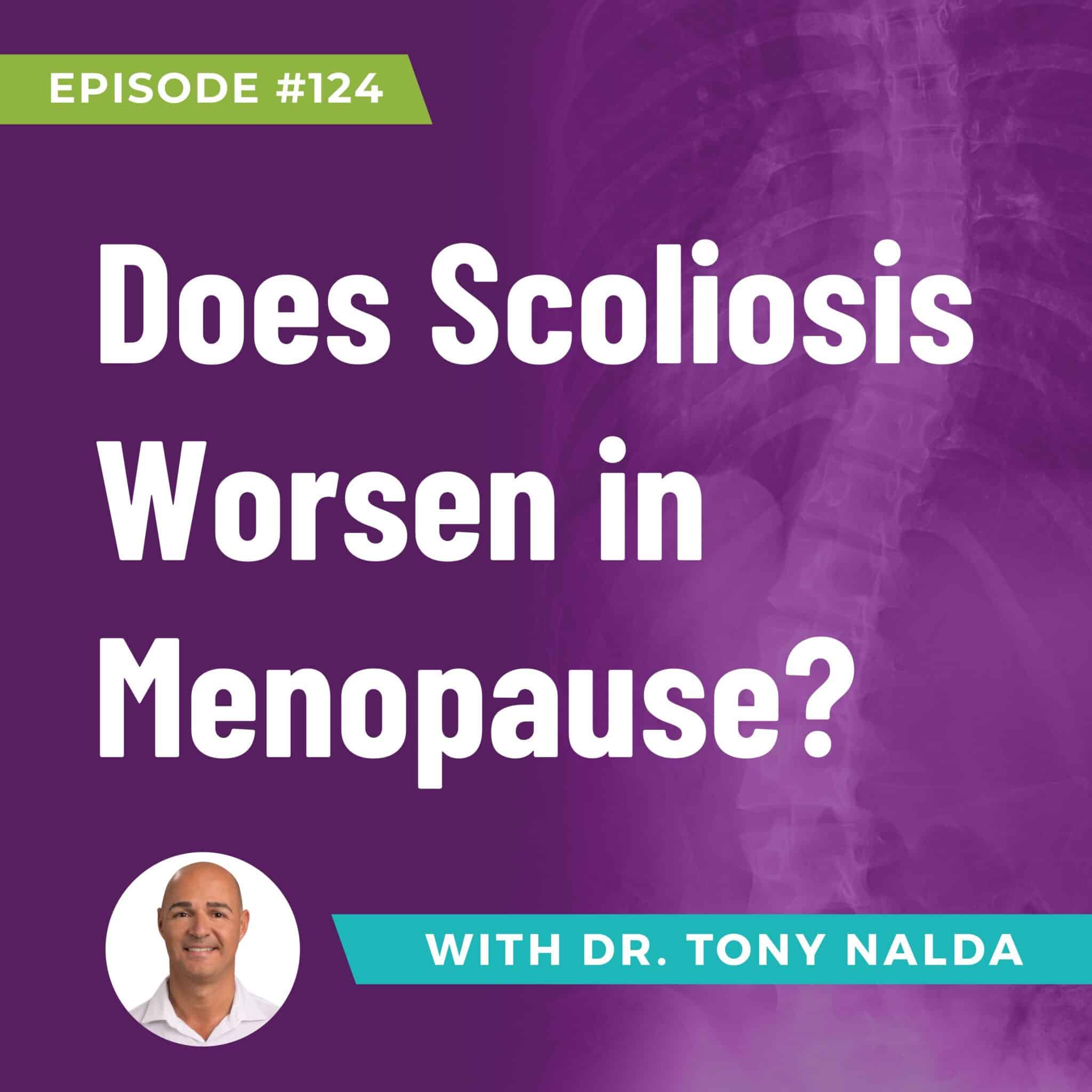Episode 124: Does Scoliosis Worsen in Menopause?
Table of Contents
Understanding Scoliosis Across Life Stages: From Adolescence to Menopause
In this episode of "Scoliosis Treatment with Dr. Tony Nalda," we delve into how scoliosis affects individuals differently at various stages of life, emphasizing the impact of growth and hormonal changes, especially during menopause.
Types and Causes of Scoliosis
Scoliosis, a multifactorial condition, manifests primarily as idiopathic scoliosis in adolescents, accounting for 80% of cases. This form lacks a singular cause, often developing due to multiple factors during juvenile years and exacerbating during growth spurts in puberty. Other less common types include:
- Neuromuscular Scoliosis: Linked to conditions affecting connective tissues or the nervous system, such as cerebral palsy or Ehlers-Danlos syndrome, leading to abnormal spinal curvatures due to tissue rigidity or laxity.
- Congenital Scoliosis: Caused by malformations like hemivertebrae during fetal development, resulting in inherent genetic scoliosis present from birth.
- Degenerative Scoliosis: Typically found in adults over 50, often post-menopausal women, resulting from spinal shifts that go uncorrected and lead to asymmetric spinal deterioration.
- Traumatic Scoliosis: Arises from spinal injuries that cause curvatures.
Gender Differences in Scoliosis
Idiopathic scoliosis predominantly affects females during adolescence, with girls ten times more likely to develop and see progression in scoliosis than boys. This is attributed to earlier and quicker growth spurts in girls, which exacerbate spinal curvatures during critical developmental phases.
Scoliosis in Menopause
Menopause marks another critical phase for scoliosis progression, particularly in women who may not have had scoliosis during adolescence. Known as de novo scoliosis, this form develops due to hormonal changes and bone density decreases associated with menopause, leading to vulnerabilities in the spine, particularly in the lumbar region. These changes can accelerate scoliosis progression due to reduced osteoblastic activity and increased susceptibility to compression.
Importance of Early and Proactive Treatment
Regardless of when scoliosis develops—whether during rapid growth phases in adolescence or as a result of physiological changes during menopause—the key to managing the condition effectively is early detection and proactive treatment. Addressing scoliosis when curvatures are smaller and before significant progression occurs can greatly improve treatment outcomes. This applies to both conservative and surgical interventions.
Closing Thoughts
Understanding the nuances of how scoliosis can develop and progress at different life stages, particularly in response to hormonal changes in women, underscores the need for regular monitoring and early intervention. Proactivity is crucial, not only in managing the condition but also in potentially mitigating its impact on quality of life.
This episode offers insights into the dynamics of scoliosis across life stages and the importance of tailored approaches to treatment. For more information on scoliosis management and treatment options, stay tuned to our podcast and subscribe for updates on new content.
Artlist.io 847544
Podcast: Play in new window | Download
Subscribe: RSS
Dr. Tony Nalda
DOCTOR OF CHIROPRACTIC
After receiving an undergraduate degree in psychology and his Doctorate of Chiropractic from Life University, Dr. Nalda settled in Celebration, Florida and proceeded to build one of Central Florida’s most successful chiropractic clinics.
His experience with patients suffering from scoliosis, and the confusion and frustration they faced, led him to seek a specialty in scoliosis care. In 2006 he completed his Intensive Care Certification from CLEAR Institute, a leading scoliosis educational and certification center.
About Dr. Tony Nalda
 Ready to explore scoliosis treatment? Contact Us Now
Ready to explore scoliosis treatment? Contact Us Now








